#xenobiology
Text

Styraphant average size ref! They're p large. Lady on the left and gentleman on the right! The males are a good percentage larger than the gals and are mainly differentiated by their 'bottom heavy' crest. Which is mainly for show.
#styraphant#art#worldbuilding#speculative biology#spec bio#xenobiology#aliens#to answer all the Qs about their size
299 notes
·
View notes
Text
NEW ALIEN

I call them Ocira. They're a sort of combination of seals and octopus. They're eusocial and very kind
That wrinkly thing on their chest are their gills, which they can use to express certain emotions.
Their "teeth" are truly spines that can be raised to eat meat, or flattened to chomp plants.
To communicate, they do a sort of drumming and pinching of their swim bladders for different tones and squeaks.
They live on an ocean planet, in shallow, warm waters around reefs.
I might draw them more and tell more about them 😸
#art#digital art#orcatnip#xenobiology#spec bio#speculative biology#alien oc#meow#original creature#creature design#sophont
2K notes
·
View notes
Text

Hey everybody, go check out @simon-roy 's new book Refugium on Kickstarter! If Simon's reputation on its own somehow isn't enough to convince you to back it, there's a whole mini specbio guidebook with entries from me and like a ton of your other favorite artists probably.

Here are my little aliens without the text and weathered effects
629 notes
·
View notes
Text
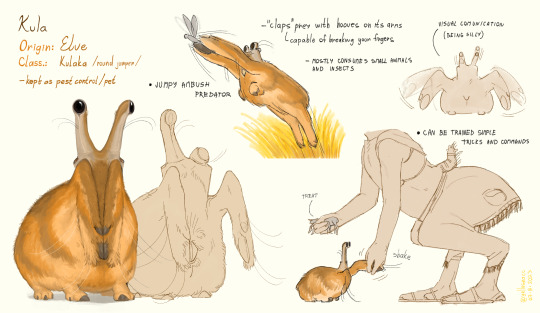
Kula!
A popular domesticated animal of slomen.
Kula are adapted for grassy areas with lots of small prey. In the wild, they either jump after flying or jumping prey or wait at burrows before smashing their prey with their hooves. If the smash isn't enough they hold it to their beak and finish it. Some species are more specialized to wait while others to jump. The domesticated Kula is speculated to be one of the more energetic hunters, mostly interested in 'insects'.
In ancient times wild Kula were attracted to sloman settlements as they would also attract prey with the slomans' food and light.
The slomen would soon learn that Kula were not pests since the wild animals were yet to be spoiled by premium meat cuts and preferred fresh moving meat that the slomen didn't want around.
In current times many cultures keep these animals as pest control on farms and in larger houses. They can be commonly seen in underground rooms that serve as food storage but for a healthy mental state, they need time on the sun.
While in the wild they are usually solitary or in small groups, Kula have a complex body language that they use to express their mood and/or needs. This can be very cute and funny, helping them become as loved as they are.
Many owners will grow to care deeply for their Kula but some cultures recognize them directly as pets. In the high-ranking societies of these cultures, pet Kula get even rounder. Often a certain trait is popular in a culture, resulting in localised breeds with different shapes and colors.

Some little goober possibilities - not entirely canon
In a few places, Kula are also part of a religion and have their own shrines.
#art#speculative biology#artists on tumblr#digital art#artwork#worldbuilding#speculative evolution#fantasy#spec bio#original alien species#original species#spec evo#speculative zoology#xenobiology#domesticated animals#slomen
2K notes
·
View notes
Text
If Wompers from my project (Land Of Borease) where selectively bred like todays dog breeds.
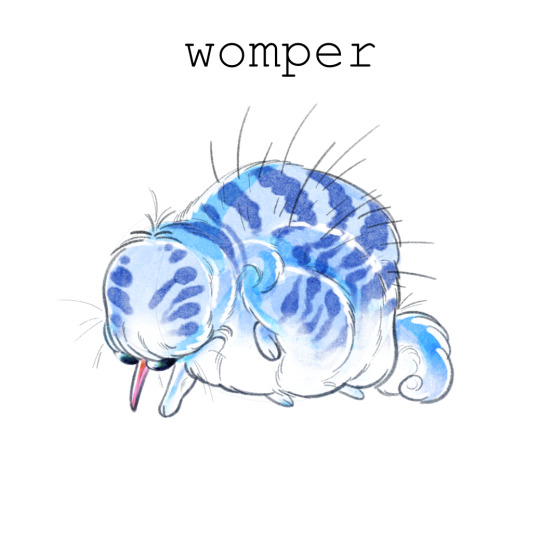
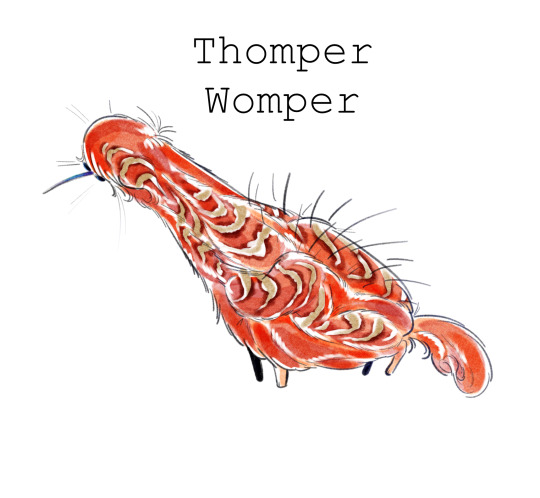


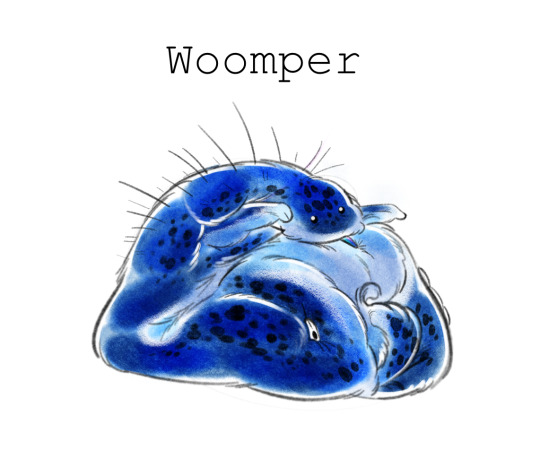
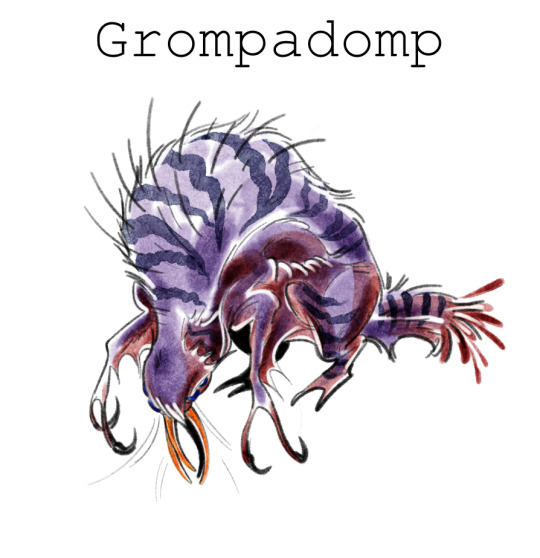
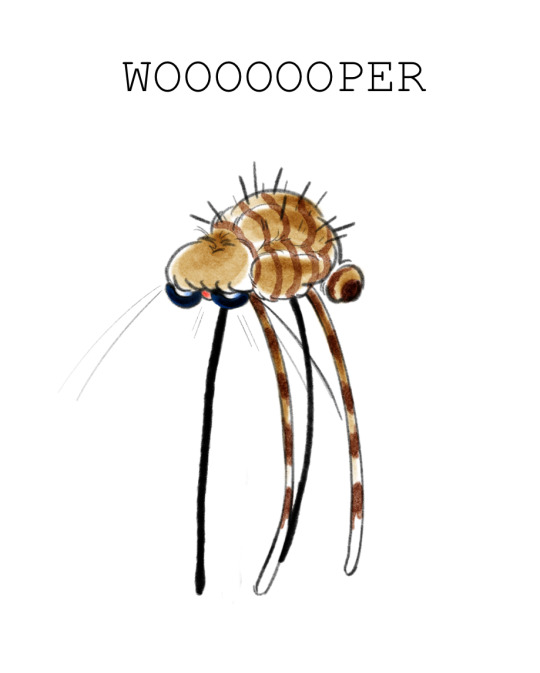
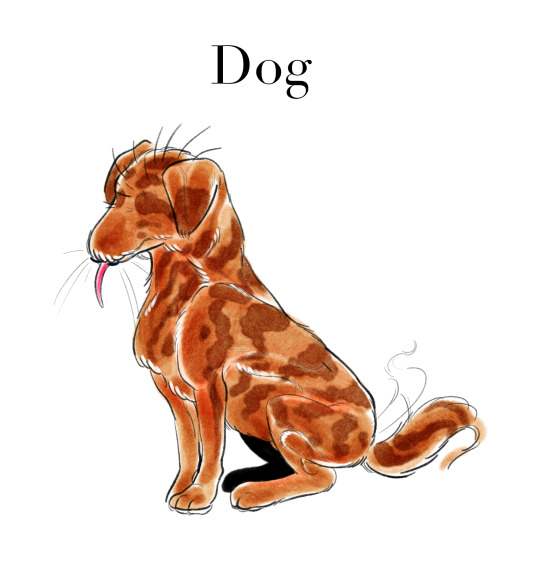
#xenobiology#alien species#spec bio#spec evo#speculative biology#speculative evolution#speculative ecology#speculative fiction#artists on tumblr#speculative worldbuilding#land of borease
923 notes
·
View notes
Text
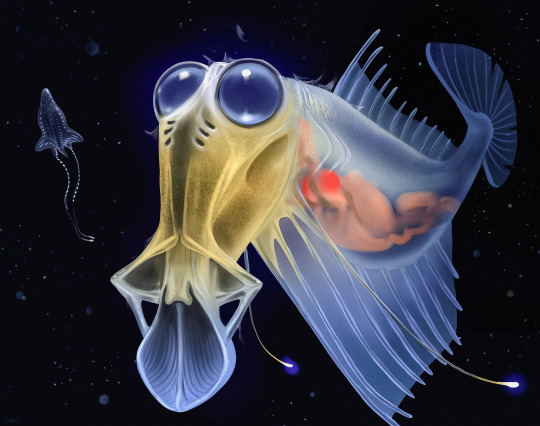
An abyssal flabbergast scooping up ocean detritus in its spoon like mouthparts.
#my art#illustration#fish#science fiction#scifi art#illustrations#scifi illustration#speculative biology#speculative zoology#speculative evolution#ocean#space#deep sea#xenobiology#alien#alien creature#creature design#bioluminecent#bioluminescence#that little jelly feller on the side just blew his mind
820 notes
·
View notes
Text
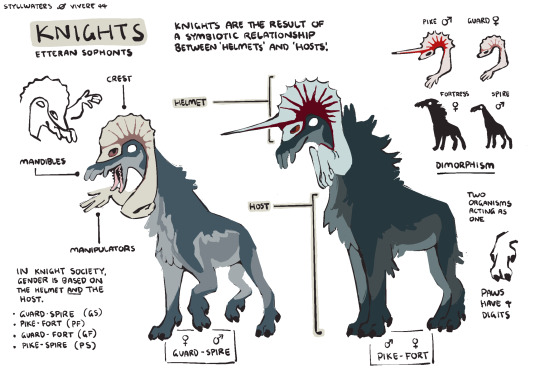


Hailing from the harsh planet of Ettera, Knights are the only sophont in the Zhagaviit system made of two consciousnesses.
---
At last, here they are! Nearly finished with redesigning every Vivere 44 species. These guys are retconned werewolves which I posted about some time ago. You might have noticed I brought back some space unicorn aspects as well! They've been through so many design changes but I've finally settled on something solid.
More information below!
I'll try to keep this concise. Most of this info is introductory biology.
Knights are the only sophonts living on Ettera, a mostly barren planet where survival is tough. Their civilisation is the least advanced compared to others in Zhagaviit, such as Arrows and Sea Crawlers. They were the third species to be contacted by the ZGC (Zhagaviit Galactic Community) followed by Post Humanity. Knights are known for being hardy, efficient, and motivated.
If it isn't already clear enough, Knights are two species in a symbiotic relationship acting as one individual. Helmets and Hosts have an evolutionary history so intertwined that one cannot survive without the other.
The Helmet is attached to the head of the Host, and will remain there for the rest of their life (unless separation happens - but we'll get into that later). In the relationship, their role is vision and dexterity. Since the Host is effectively blind, it is the Helmet's job to guide them. Their hands are also important, being the Knight's primary manipulators. They played a large part in early tool use. The Helmet lacks a mouth, and receives all its nutrients from the Host through a specialised organ not unlike an umbilical cord.
The Host is essentially the main body of the Knight. Wolflike and mammalian in nature, the Host is the Helmet's mode of transportation. Because they need to eat for two, Hosts are omnivorous and will eat just about anything. Although majority of their diet is comprised of meat, they are capable of digesting plant matter and bones. They are highly skilled and effective hunters.
It is in both party's best interests to assimilate as soon as possible. The Host cannot see without a Helmet, and within a few weeks bonding will become impossible. The stakes are higher for a newborn Helmet, because they cannot feed by themselves and will starve in under a week without a Host or an artificial feeder tube. Prior to first contact with the ZGC, Knights did not have the technology for artificial feeders, and infant death rates were high.
So how do two beings coordinate one body? The fact is that once assimilation occurs, they become one being. The Helmet's brain and the Host's brain are connected by millions of nerves exchanging signals. It's complicated, but the best way to describe the experience would be a 'mutual trance' in which full body coordination is achieved. They have shared interests and intentions. However, a Knight can mentally separate the Helmet and the Host, gaining back individuality; they do this for many reasons, perhaps to discuss something among themselves or simply for company. Yet on the whole, a Knight will spend 80% of their life in this 'trance'.
Both Helmets and Hosts have noticeable sexual dimorphism. Male Helmets are called Pikes, and females are called Guards. Pikes are distinguished by their horn, bold stripes, and more prominent crest spines. Guards lack a horn and have less contrast in their thinner markings.
Female Hosts are called Forts. They are larger than males and have a mane of fur on the back of their necks. Male Hosts, Spires, lack this mane.
In Knight society, individuals are usually referred to based on their combination of Host and Helmet. Since there are four sexes involved, there are four possible combinations.
Guard-spire [female Helmet, male Host]
Pike-fort [male Helmet, female Host]
Guard-fort [female Helmet, female Host]
Pike-spire [male Helmet, male Host]
(Knight languages have their own version of pronouns for each, but in English all are referred to as they/them by default. Of course, each individual has their own preferences. Usually a Knight will refer to themselves as we/us).
____
I'll get into Knight social structure, cultures and more in another post! For now, if you have any questions, feel free to send an ask. Always happy to answer!
#vivere 44#speculative biology#spec bio#my art#art#knights#aliens#speculative evolution#spec evo#xenobiology#artists on tumblr#science fiction#worldbuilding#headworld#its finally DONE
2K notes
·
View notes
Text

kyhuine southern (dry valley group) crop farmers in a field of "siesu". Which are basically mold balls that can be used like cotton.
The post will be updated with additional text later about domesticated siesu and its usages.
drawing started months ago on krita but it wasn't going well, finished and painted on rebelled 7
#2024#digital art#my art#artists on tumblr#speculative zoology#altuyur#kyhuine#worldbuilding#no txt yet#xenobiology#speculative biology#painting
1K notes
·
View notes
Text
Alien Questionnaire - A Biological Perspective
A while ago, somebody linked me a very comprehensive worldbuilding questionnaire. For most aspects of a fictional society, it was great, but I noticed it assumed that anyone using it was making up a fictional human society, or at least a society of beings very similar to humans. As such, there was almost nothing in the biology department, which to me is one of the best parts! Thus, this questionnaire was born.
These questions are designed to help people worldbuild from a biological foundation. As such, the questionnaire only touches lightly on other aspects of a fictional society, and is more of a jumping off point. I wrote it with the aim of using it to develop aliens, but it should be suitable for any project with non-humanoid species, such as sapient terrestrial animals.
Have fun! I'd love to see your answers :)
------------------------------------------------------------------------------
General Anatomy
How many limbs do they have? Do they have limbs at all?
What are their primary manipulators? Where are they located? How does this affect their tool use, building ability, etc?
What kind of body covering do they have, e.g. hair, scales, feathers? How do they clean it? Do they shed this covering constantly, or all at once at certain times?
Can they maintain a constant body temperature? If not, how do they deal with changing environmental temperatures?
What kind of habitat do they live in? Both specific habitat, and broader such as on land vs in water.
What adaptations do they have for living in this habitat?
What kind of creature did they evolve from?
What are the similarities and differences to their closest living relatives?
What resource(s) is the most necessary and urgent for them? E.g. for many animals, but not all, it’s water.
What are some common mutations? E.g. eye colours, ability to digest lactose in humans.
What injuries or illnesses are considered disabling?
How is their healing ability? Can they regenerate? If they can, is that limited to certain body parts or a certain number of times?
Senses
What senses do they have? E.g. sight, smell, electroreception, etc.
How good are those senses?
Which of their sense/s do they use the most in everyday life?
How might this choice of sense impact the way they interact with the world?
Can they detect things that Earth creatures cannot? If yes, how and why?
Movement
How do they move? Do they walk, crawl, fly, etc?
If they have multiple modes of movement, which is preferred, and why?
Which part/s of their body do they use to move?
What is their speed and endurance like?
How agile are they?
Do they rely mainly on their own bodies for travel, or do they use pack animals and machines?
How often do they move around? Are they mainly sedentary, do they move a lot within a set area, do they migrate, etc?
Do they have different levels of mobility depending on age, sex, or other biological group? E.g. young barnacles are able to swim, while adults are anchored permanently to a surface.
Reproduction and Lifecycle
How many sexes are there?
Are there differences between the sexes (ignoring the reproductive system)?
Are there different castes, such as in honeybees or naked mole rats? If so, what is the function of each caste?
Are differences in sex or caste used to justify discrimination or hierarchy? How might these ideas differ in different populations?
Do they have a concept of gender? If so, is gender affected by sex, caste, or some other factor?
How do they attract a mate? Do they release a chemical into the air, do an elaborate display, etc?
Does one individual try to actively woo another, or is courtship more mutual?
What do they find attractive in members of the same species?
What is the usual reproductive partnership? E.g. two individuals, one main reproducing individual with a harem, no set partner, etc.
How long do they live?
How are young brought into the world? Live birth, eggs, spores, etc?
Is producing young a painful, dangerous process, or is it easy?
How much parental investment is there? Are there many young with little investment, or few young with a lot of investment (r vs K strategy)? Or is it somewhere in the middle?
How many offspring are produced at a time? Think about how attitudes towards children may differ between a species that produces one or two, and a species that produces dozens or even hundreds at a time.
How do they grow? Are they born looking like miniature adults, gradually growing bigger? Do they have specific phases of high growth, like puberty? Do they have a larval phase, metamorphosis?
How self-sufficient are they as young? Can they move around and feed themselves as soon as they are born? Do they require parental care?
What is the usual structure of childcare? Single or multiple parents/related individuals? Communally raised?
Is sex purely for reproduction, or does it serve other purposes?
What kind of sexuality is considered the norm? This doesn’t just refer to same/other sex pairings, but the culture around sex in general.
Diet and Foodchain
What is their diet? Are they carnivores, omnivores, frugivores, insectivores, etc?
Do they feed off an unusual source, for example rocks, metals, or (in appropriate settings) something like magic or souls?
What physical adaptations do they have for this diet?
Is their diet very restricted, or can they have a wide range of foods?
How often do they eat? What is the culture around mealtimes, if any?
Are they prey for other organisms? For each other?
If they are, how do they deal with it? Do they fight back, have barriers, or do they accept it as a part of life?
If they are hunters themselves, what is their attitude to killing other organisms? Are they respectful? Prideful of their kill? Is it completely trivial?
If they are hunters, how do they hunt? Are they solitary or packhunters? Are certain members of the group designated to hunt?
Are the results of foraging or hunting shared, or is it everyone for themself?
Are they parasitic, parasitised, or in a symbiotic relationship with any other organisms?
Body Rhythms
How often do they sleep?
What time of the day are they most active? Are they nocturnal, diurnal, crepuscular?
Do they generally sleep for one long period a day, multiple shorter periods throughout, or something in between?
Do they sleep to cope with extreme temperatures or bad conditions, i.e. hibernate or aestivate?
Do they have any biological processes that disrupt their life e.g. moulting, reproductive cycles, etc?
If yes, how does their society accommodate for these processes? Does it accommodate them at all?
Communication
What is their main method of communication? Sound, visuals, scent, etc? Think about their main sense and how this would affect communication.
What is their body language like? What small moving parts might aid their body language?
If they have multiple methods of communication, are they all given equal weight, or is one considered higher than others?
Society
How sociable are they?
If social, what is the usual social structure?
Are there hierarchies? How strict or relaxed are the roles?
How are disputes usually settled? Is it more common to be violent or appease the other party?
If not social, what is the reaction to being with other individuals? Do they become aggressive or stressed? Do they tolerate each other?
What is the usual size of a community? Do they have communities at all?
Do they have an in-group vs out-group mentality? If so, how strong is it? This generally relates to how scarce or plentiful resources were during their evolution, and how territorial their ancestors were.
What kind of bonds do they form?
On the spectrum of individualistic to community-oriented, where do they fall?
Do they have a strong sense of personal identity? Think about how this might tie in with the previous question.
What are the main things they derive identity from? Occupation, gender, family ties, etc?
Do they have names? If yes, how are these names formed? Are they given by another party or chosen by the individual?
Have they domesticated any creatures? If so, what do they use these creatures for?
Do they have any unusual relationships with other creatures on their planet (beyond predation, parasitism or mutualism)?
Do they produce art? What are their main forms of artistic expression? Think about how this will be linked to their main sense(s), communication method, and/or primary manipulators.
------------------------------------------------------------------------------
GLOSSARY
Primary manipulator: Main body part used to manipulate objects, e.g. hands in humans, trunks in elephants, feet in parrots.
Sedentary: Inactive, staying in the same place.
Caste (reproductive): A group within a species with differences in body type and reproductive ability.
Symbiosis/Mutualism: Interactions where both parties benefit, e.g. cleaner fish getting a meal in exchange for picking irritating parasites off larger fish.
Aestivate: To become inactive during hot or dry periods, usually involving being sealed in mucus or soil e.g. lungfish, snails.
Reproductive cycle: Regular hormone fluctuations that affect an animal’s fertility or attitude towards breeding. The cycles can range from months to years and can include things such as antler growth in male deer, heat cycles, and menstruation in humans.
#worldbuilding#biology#zoology#speculative evolution#speculative biology#spec evo#spec bio#alien#questionnaire#xenobiology
2K notes
·
View notes
Text



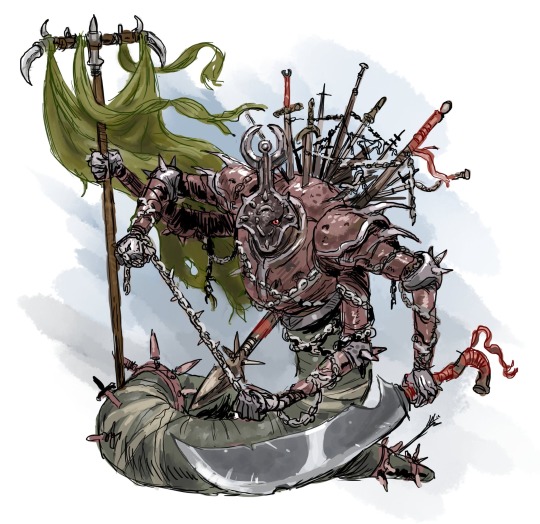


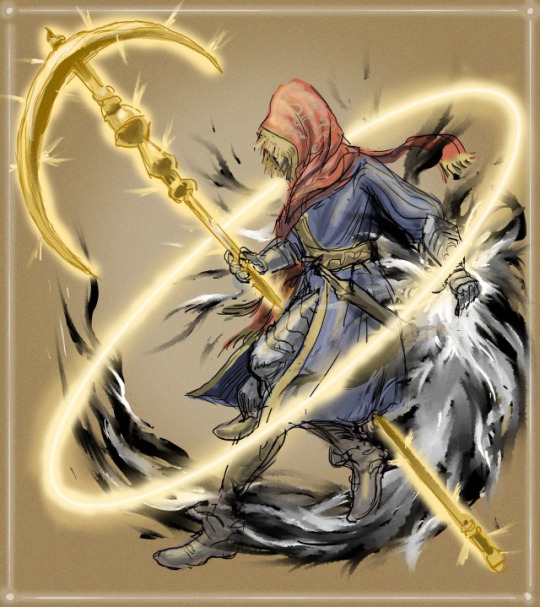
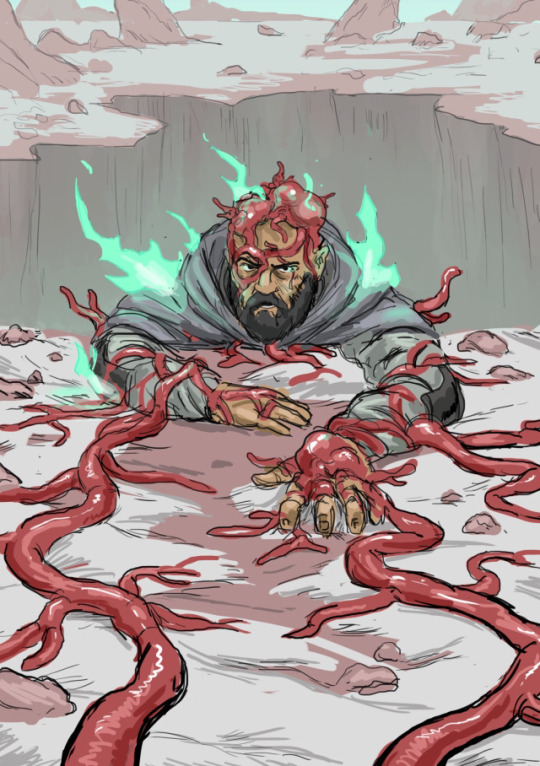
PLEASE BOOST
got a tough month ahead of me before the new job starts paying out so I need to open up some commission slots!
here’s a little mini portfolio of the sort of stuff I can do. fanart, comic covers, entirely new characters, fully rendered, sketchy. DM me or email at [email protected] to talk shop with me!
#illustration#art#character design#artists on tumblr#scifi#sketch#comic#concept art#my art#alien#fantasy#dnd#ttrpg#rpg#zine#lancer#mech#creature design#xenobiology#prop design#elden ring
727 notes
·
View notes
Text
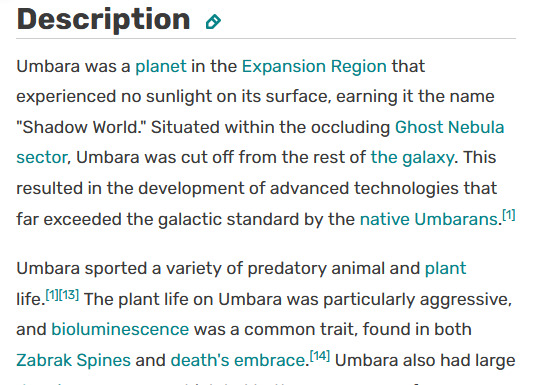
Wow, what a cool exotic Star Wars planet!
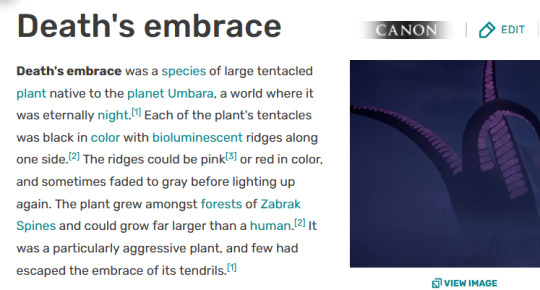
Wow its apex predators are bioluminescent plants that evolved in total darkness!
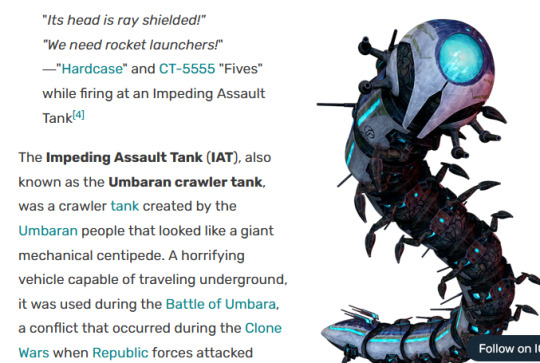
Oh shit there's a civilization there and it rides around in giant "horrifying" tunneling centipede tanks?! Can't wait to see what these weird ass aliens must look li-

wow don't strain your imaginations TOO hard guys
933 notes
·
View notes
Text
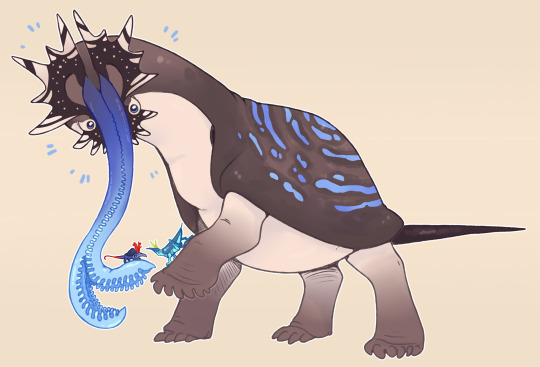
NEW ALIEN AGAIN! This one I wanted to stick to being more Earth inspired, connecting with my roots. I'm calling 'em Styraphants cause they're mostly a mix of styracosaurus, elephant, and mollusk of course. Trying to make a quad walking sophont always lends to kind of a centaur-ish body plan, so tried to think outside the box for appendages this go around. They've got a pair of trunk tentacles around their mouth that they use as their hands, which have a fleshy 'zipper' to slot together at rest. They also smell/taste with them so gloves are a very popular purchase.

Oh also! Their eyes are on little stalks that peak out around their frill, they can hide them away if scared. Also all the fellas pictured here are gals! They have a male/female system in keeping with the Earthling megafauna theme.
#art#worldbuilding#speculative biology#spec bio#styraphant#alien#xenobiology#fleshing out existing critters<makin new ones#it is a curse
870 notes
·
View notes
Text

A daily reminder how tovoxran toothing looks like <3
#myart#alien#alien species#original alien species#sci fi#science fiction#worldbuilding#speculative evolution#speculative biology#xenobiology#spec bio#spec evo#creature design#creature#monster design#alien design
447 notes
·
View notes
Text

New year, new creature reveal!
This animal is an Iťalaq, a large creature adapted for the hot and dry environment of the east. Just like some earth desert animals, it has energy storage in the form of its watery bloodstream and of a large fat pocket under its 'pelvis'.
They feed primarily on plant matter. Bushes and grasses are easy targets, while hard or spiky materials will get stomped on with their middle limbs to then scoop up the insides. For food high up, they pick on it using their front limbs and throw it to the ground or insert it directly into their mouth. They do not mind a meaty snack.
As a bonus unpleasant fact, Iťalaq have the contents of their 'ends' ready to protect them from predators (both liquid and bullets), and it gets very stinky if they eat meat before the processing.
You are unlikely to ever see one in nature - at least not the domesticated species that are used all over the eastern sloman cultures (those are better reported to the nearest settlement).
Their history with slomen is not as long as it is with pamuli that evolved side by side with slomen. However, they are considered the first domesticated "arm-jaw" animals and have served people for thousands of years as their main "vehicle". Where they are used, wheels and carts are uncommon, finding most use in cities.
One iťalaq can often carry over 200kg (330 pounds), but it's better to keep the weight lower and let a pamuli take the rest of the cargo.
In this illustration, the rider is a sloman matriarch, likely stopping to stare at a strange phenomenon.
It is often that a northeastern family has at least one iťalaq, and the oldest members are the primary riders (both because of the member's importance and less energy from old age). The matriarch is the oldest and most respected, so it's only expected she's most familiar with the animal.

the picture with no text
hope the text wall doesn't have too many mistakes man
#art#speculative biology#artists on tumblr#digital art#artwork#worldbuilding#speculative evolution#spec bio#fantasy#original species#speculative zoology#speculative fiction#xenobiology#slomen#sloman culture#domesticated animals#spec evo#alien animal#elve
456 notes
·
View notes
Text
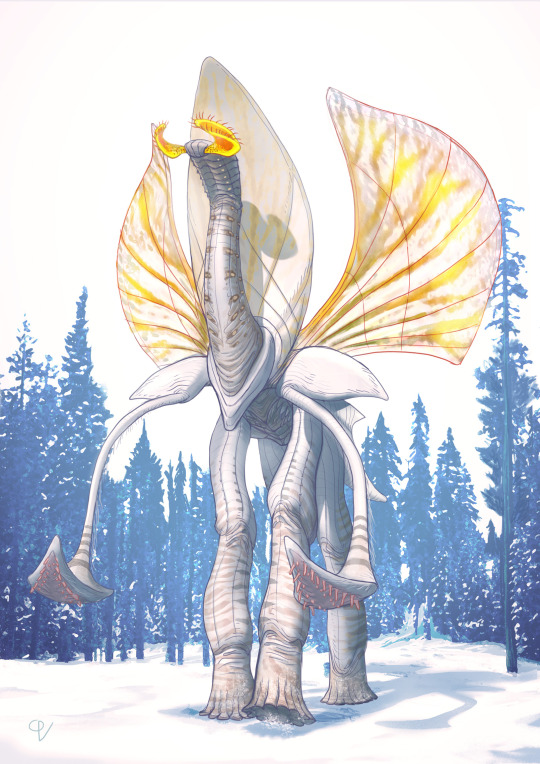
Here's my entry for the spectacular #Refugium2024 contest, arranged by @simon-roy on the occasion of his comic Kickstarter!
Because there were five different clades to choose from, I ultimately picked the photosynthetic "pentaped". It wasn't my first choice, though, as I love the idea of the crustacean-like "skilloids", but the five-legged plant animals seemed like they could be a hell of a challenge.
So here is the Helioceros (aka Cherubic Pentaped), an alpine species that stores and uses sunlight as an energy source and for displaying behavior.
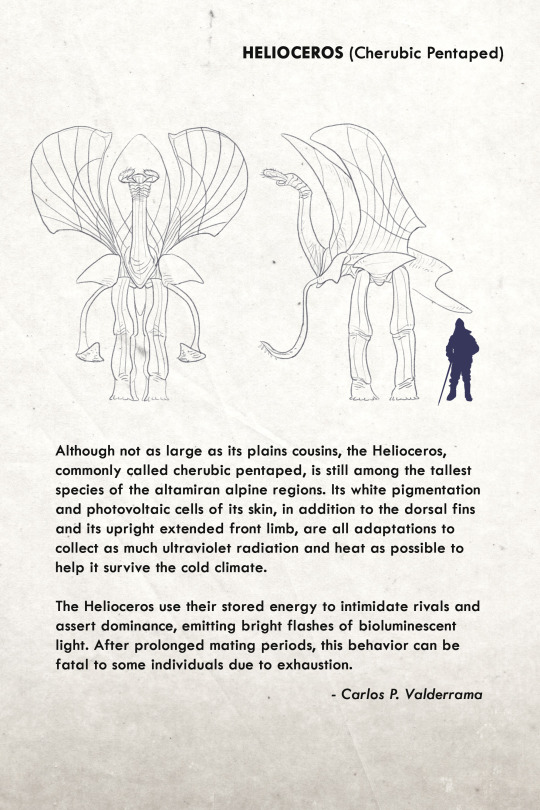
Hope you like it!
And hey, do not forget to support the Refugium comic! Not every day do we come across projects as cool as this!
265 notes
·
View notes
Text

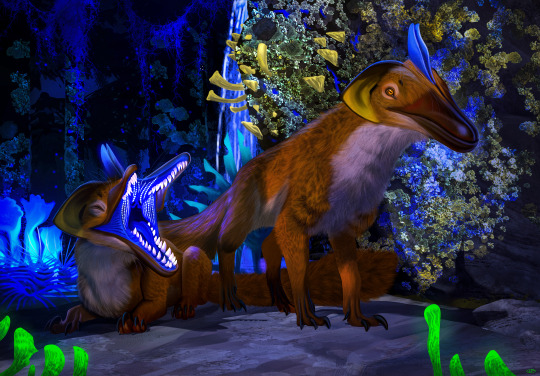




Here is another collection of exotic alien wildlife.
#my art#illustration#alien creature#alien#scifi art#science fiction#speculative zoology#speculative biology#speculative evolution#xenobiology#bioluminecent#bioluminescence#space#scifi illustration#wildlife art#wildlife#creature design
930 notes
·
View notes